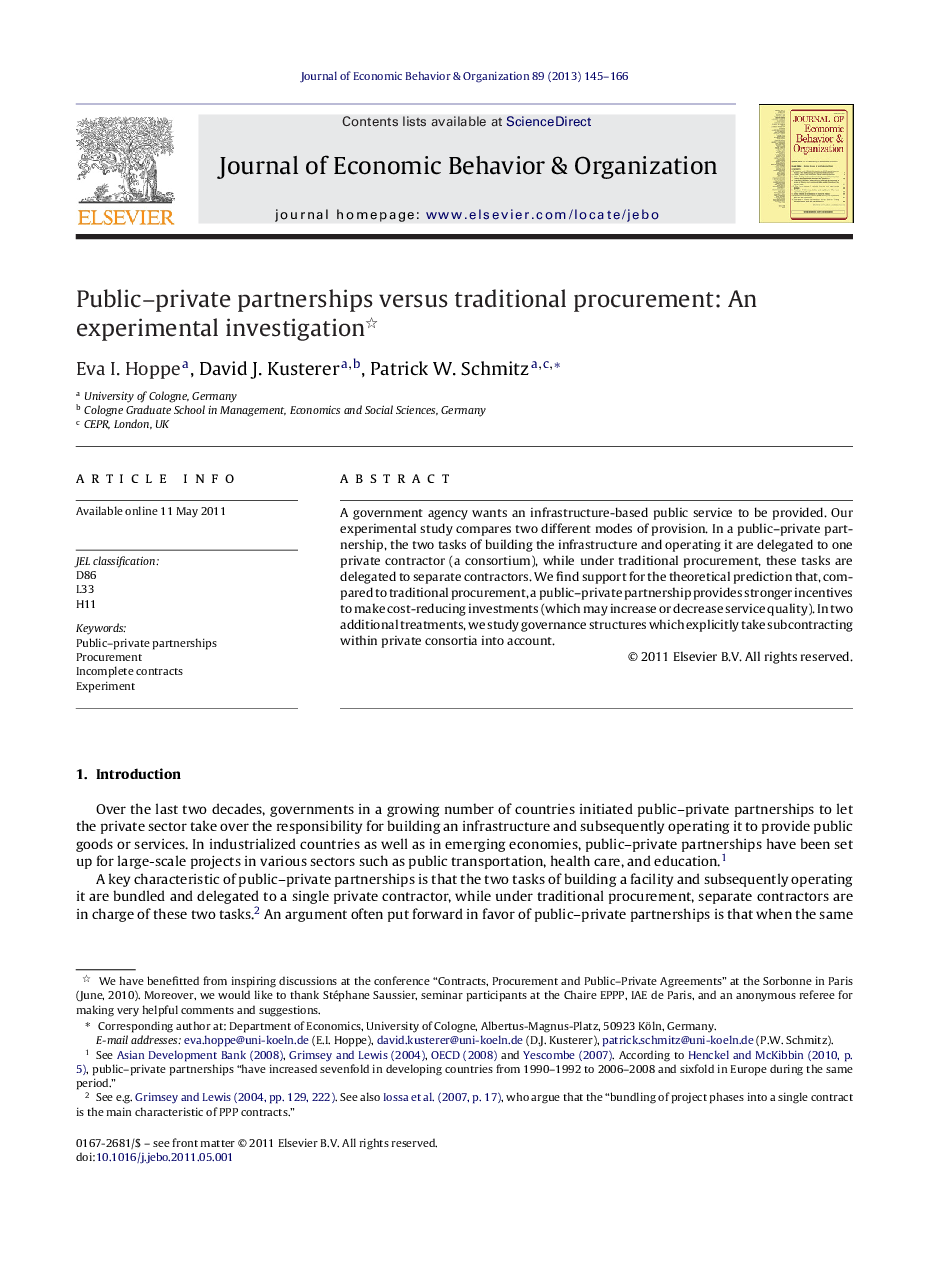| Article ID | Journal | Published Year | Pages | File Type |
|---|---|---|---|---|
| 883651 | Journal of Economic Behavior & Organization | 2013 | 22 Pages |
A government agency wants an infrastructure-based public service to be provided. Our experimental study compares two different modes of provision. In a public–private partnership, the two tasks of building the infrastructure and operating it are delegated to one private contractor (a consortium), while under traditional procurement, these tasks are delegated to separate contractors. We find support for the theoretical prediction that, compared to traditional procurement, a public–private partnership provides stronger incentives to make cost-reducing investments (which may increase or decrease service quality). In two additional treatments, we study governance structures which explicitly take subcontracting within private consortia into account.
► We conduct a laboratory experiment on public procurement. ► An infrastructure must be built and operated. ► In public-private partnerships (PPPs), building and operating tasks are bundled. ► In traditional procurement, building and operating tasks are separated. ► Our experiment confirms that PPPs provide stronger investment incentives.
